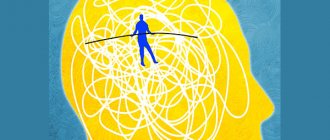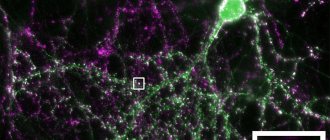- Emotional and behavioral disorder
Behavioral disorders can occur in connection with a variety of mental disorders. However, not every illness is capable of causing serious changes in behavior or an inadequate vision of the world. A number of disorders do not develop at the psychotic level, and therefore do not cause impairment of intellectual activity and retain the ability to care for oneself independently.
Conduct disorder in children
A distinctive feature of conduct disorder in childhood is the inability to control and plan one’s own actions, as well as interact with other people in accordance with accepted norms and rules. Increased aggression, irritability, lack of discipline and desire to obey elders, pugnacity, cruelty, theft appear, and often the child begins to lie.
To establish a diagnosis, specialists carry out a number of psychodiagnostic measures and also talk with the child, drawing up the most competent and complete history. Treatment development is carried out through therapeutic techniques in an individual or group setting.
Epileptic psychoses, mental equivalents (twilight disorders of consciousness)
A twilight state of consciousness (twilight) is a synonym for narrowed consciousness, when the patient comprehends only what he sees in front of him and at the moment, and is not aware of the past and future. It kind of resembles a horse with blinkers. Twilight occurs as an episode (in the classical sense of the term) with an acute beginning and sudden ending, as well as complete amnesia of what happened.
Among epileptic psychoses and mental equivalents there are:
Unproductive twilight states of consciousness:
- Ambulatory automatism or trans. The patient performs usual activities (cooking, traveling on public transport) and outwardly resembles a simply absent-minded person. However, consciousness is altered, and the environment is perceived indistinctly. A person remains in this state from several hours to several weeks. After emerging from automatism, the patient falls into a deep sleep, after which amnesia of what happened is observed.
- Fugue is a sudden short-term motor excitation in the form of elementary movements or actions (a person runs somewhere, undresses, makes impulsive movements) followed by amnesia of what happened.
- Somnambulism (sleepwalking) is a type of ambulatory automatism during sleep. It is distinguishable from ordinary sleepwalking, which also occurs in a healthy person, since during sleepwalking you can wake up a healthy person, but with somnambulism (sleepwalking), attempts to do this will be futile. Subsequently, the period of sleepwalking is amnesic.
Productive disorders:
If hallucinations corresponding to dysphoric affect predominate, then this twilight state is called delirium. If delusional ideas of persecution predominate, then this twilight is classified as epileptic paranoid.
- Epileptic paranoid. The patient experiences sensory delusions with auditory and/or visual hallucinations. He is excited, anxious, perceives his surroundings in bright colors. He sees people's actions as a threat, tries to escape or commit aggressive acts. Delusional ideas are usually unsystematized.
- Epileptic delirium. The patient sees an influx of vivid visual hallucinations of terrifying content (fires, corpses, murders). At the same time, he is disoriented in time and space, but his personal orientation is preserved. The patient is excited, screams, and after leaving the state completely forgets what he saw.
Types of conduct disorder
An entire classification of behavioral disorders has been created, where each type has its own distinctive characteristics, treatment methods, symptoms and diagnostics.
Mental and behavioral disorders
It is important to note that with the development of a mental disorder, each person will be able to establish this in connection with pronounced symptoms. The most common include: the inability to fully think and engage in intellectual activity, the emotional background is constantly changing, and deviations in behavior from generally accepted norms often appear.
As a rule, a person begins to hear non-existent voices or see unreal objects. Behavioral reactions often appear that were previously unusual for him. Aggression increases, the patient can lose his temper over literally every little thing. The cognitive sphere is also affected: it becomes difficult to read, carry out mental operations, and anxiety, fear, and aggression often appear.
Mixed conduct disorder
Characterized by disturbances in intellectual activity, action and behavior. This diagnosis falls into the category of mental. Their behavior is often regarded as inadequate; the occurrence of the slightest stressful situation is perceived differently. As a result, disagreements in professional activities or family may increasingly arise.
A distinctive feature is the fact that a person cannot recognize the occurrence of a mental disorder, so treatment often begins at an advanced stage.
The main tasks of the specialist are:
- Restoring normal response to external factors
- Teach the patient to interact with others in accordance with social norms
- Do not harm others or yourself.
The disease develops throughout life. Most often it occurs in childhood. During adolescence, personality development continues, so making such a diagnosis is not always correct. With the onset of adulthood, the patient's condition begins to rapidly deteriorate and a mixed type of disorder occurs.
Organic conduct disorder
This is a type of disorder that appears as a result of impaired brain activity, or as a result of the development of mental disorders and other diseases. When a disorder is diagnosed in the brain, the person's behavior automatically changes. This is due to the fact that the brain is responsible for carrying out thought processes and thinking.
Equally important is to establish the age at which the organic disorder began. Adolescence and menopause are the most dangerous, since most often changes are observed in a negative direction.
Among the main causes of the disorder are the following aspects:
- Epilepsy (if its development continues for more than 10 years). A whole range of side symptoms is diagnosed, of which the patient is aware
- Suffering a brain injury. As a rule, an organic disorder manifests itself with severe mechanical damage. This is especially true if the integrity of the skull has been compromised. Serious abnormalities can develop when injured during adolescence
- Excessive consumption of alcoholic beverages, use of psychotropic substances and narcotic drugs
- Autoimmune diseases
- Education of oncological type
- Diseases of the vascular system and circulatory disorders.
Depending on the complexity and development, the disease can manifest itself in completely different ways. Among the most common manifestations are the following aspects:
- The emergence of specific behavioral habits
- A person is unable to control his own will and behavior
- Increasing emotional instability
- Cognitive activity decreases
- The emergence of delusional ideas.
To make a diagnosis, it is important that the symptoms appear continuously. Otherwise, one-time outbreaks do not prove the development of an organic disorder.
Social behavior disorder
A category of disorders characterized by deviant behavior and excessive aggressiveness. Most often develops in childhood or adolescence. As a rule, the disorder at the emotional level manifests itself minimally. Violations do not necessarily manifest themselves in family or work activities. If the disease develops in a schoolchild, the following aspects can be diagnosed:
- The disorder most often manifests itself when interacting in a group
- Delinquency
- Violations of the rights of other group members
- The child may start stealing
- Leaving an educational institution on your own, vagrancy
- Increased excitability.
In differential diagnosis, first of all, control and observation of interactions with other people and peers are established. In addition, diagnosis requires the presence of persistent symptoms for at least six months.
Hyperkinetic behavior disorder
It consists in the appearance of complex behavioral disorders, which manifest themselves in excessive impulsiveness, hyperactivity, and inattention. As a rule, the first signs can appear at an early age. As a result, the child may experience difficulty communicating with other schoolchildren or older children. According to statistics, 5% of the total number of children suffer from this disorder every year and most of them are male.
There are no specific reasons for which this disorder occurs. But it has been established that there is a genetic predisposition and experiences of strong amplitude. Other common factors include:
- Insufficiently balanced diet
- Serious poisoning from heavy chemicals
- Having a serious stressful situation
- Long-term use of medications
- Traumatic brain injuries.
When the disease develops in childhood, there is increased activity, impulsive behavior, and inability to concentrate.
Mixed emotion and behavior disorder
Manifests itself in childhood at an early stage. The main factor is the negative situation in the family, constant scandals, cruel punishments, and insufficient expression of love for the child. The main manifestation is deviant behavior (hooliganism, theft, excessive aggression, rudeness, vagrancy) in young children and teenagers. As a rule, negative relationships are formed with adults who represent power.
Regarding diagnostic measures, we can highlight, first of all, observation. If persistent behavior deviates from accepted norms, a diagnosis of mixed disorder is established.
Socialized conduct disorder
The development of deviant behavior that differs from established norms is called a socialization disorder. Often the first signs are observed during school or adolescence.
The disease appears due to the accumulation of external negative factors, which may include a negative environment at home or in an educational institution. Often a child becomes an outcast and may be bullied by his peers. After a certain period of time, the child experiences a tendency towards hooliganism, gets into fights, and is rude to adults. Often conflicts arise with government officials.
During the diagnostic process, it is important to note the fact that a socialized disorder is diagnosed only if the signs appear over a long period of time (at least 6 months).
Suicidal behavior disorder
Characterized by the desire to cause physical harm to oneself, which will lead to death. The aggression that a person directs at himself has many facets, and therefore is studied separately by specialists.
There are several distinctive features that characterize suicidal disorder:
- To solve a problem, a person tries to kill himself
- Psychological torment and painful experiences act as stimulants. Suicide in this case acts as a quick solution to the problem
- The person ceases to see a way out of the current situation, shows helplessness and hopelessness
- The emergence of a persistent feeling to commit suicide
- How to avoid a greater evil
- The emergence of self-hatred.
If the above signs and symptoms occur, the patient should be referred to a psychologist or psychotherapist to correct the condition. If severe depression develops, specialists may prescribe additional medications.
Deviant behavior disorder
Sustained opposition to social norms, as well as the desire to prove the correctness of one’s own approach to life, is called a deviant disorder. It is most often expressed in antisocial behavior traits.
The manifestation of deviant behavior presupposes the formation of inadequate moral attitudes, rules and foundations. Most often manifests itself in adolescence through the following attitudes and properties:
- Presence of an impulsive reaction
- Inadequate response to external manifestations of the surrounding world
- Behavioral reactions that occur repeatedly
- Manifestation of antisocial behavior in society.
It has been found that the development of such symptoms is shaped by psychological and social factors. Among them are the distinctive features of upbringing, hereditary predisposition, the formation of a negative microclimate in the family, and the use of drugs and alcohol.
When diagnosing this disorder, consultations with a psychologist and behavioral correction work are required.
Hyperkinetic behavior disorder in children
In children, hyperkinetic disorder is most often associated with excessive control by parents or caregivers. However, this is not the only factor that can lead to the persistent development of pathology. The influence is exerted by a certain situation in society (for example, in the classroom or in the family). Among the most pronounced signs it is worth noting:
- Excessive impulsiveness
- Increased activity
- The function of attention is impaired.
Regarding the last point, it is important to note that it is difficult for a child to concentrate in order to fully assimilate the educational material. Often he begins to lose disorientation, unable to organize himself independently; if he starts one thing, he cannot complete it.
Children, as a rule, are fussy, have difficulty withstanding waiting, and are unable to independently adapt to new conditions in society.
Autistic behavior disorder
As a result of autistic disorder, there is a distortion of real events that occur in the environment. A person may also experience difficulties in communicating with other people. Diagnostic measures are carried out through observation and conversation.
If the diagnosis is confirmed, then treatment occurs through a whole range of measures: medications, work with a psychologist, and the development of special training programs.
Unsocialized conduct disorder
Among the main signs is the persistent manifestation of antisocial behavior. Increased aggression and anger often manifest themselves, and there is often a disruption in the process of communication with other people, regardless of age category. Most often it develops in adolescence, when the child tries to show his superiority through hooliganism and fights.
Organic personality and behavior disorder
It manifests itself as a result of brain injuries, which negatively affects the development of personality and behavior. A person is often diagnosed with moral and mental exhaustion, and mental activity gradually decreases. The most acute periods of the disease are the onset of menopause and adolescence.
Disorders of volitional behavior
The distinctive symptomatology is disturbances associated with activities. Often there is a weakening or strengthening of volitional qualities that go beyond the acceptable norm. When hyperbulia is detected, a person acts with unshakable determination, which is far from an objective assessment of the current situation. Abulia is a decrease in volitional qualities, since a person lacks incentive motivation to act. Passivity, lethargy, and fulfillment of plans are often diagnosed.
Types of personality disorders.
Several different types of personality disorders are recognized. They can be grouped into one of three groups - A, B or C - which are given below.
Cluster A personality disorders.
A person with Cluster A personality disorder tends to have difficulty interacting with other people and would normally be considered strange and eccentric by most people. They can be described as living in a fantasy world of their own illusions.
An example is paranoid personality disorder, when a person, against the background of “exemplary behavior,” becomes extremely distrustful and suspicious.
Cluster B personality disorder.
A person with Cluster B personality disorder struggles to regulate their feelings and often fluctuates between the positive and negative opinions of others. This can lead to patterns of behavior that can be described as dramatic, unpredictable and disturbing.
A prime example is borderline personality disorder, where a person is emotionally unstable, has impulses to harm himself, and has intense, unstable relationships with others.
Cluster C personality disorder.
A person with Cluster C personality disorder struggles with persistent and overwhelming feelings of anxiety and fear. Such people can rarely show patterns of behavior; most people with this class will have antisocial and withdrawn behavior.
An example is avoidant personality disorder, where a person is painfully shy, feels socially inhibited, inadequate, and is extremely sensitive. A person may and often wants to be a good family man, but lacks the confidence to form close relationships.
Personality and behavior disorders
Depending on the type of disorder, not only a radical change in behavior occurs, but also in the personality layer. As a result, it is difficult for the patient to interact in society, and constant conflicts at work and family may arise. Most often, such disorders are not recognized by the patient.
Emotional and behavioral disorder
The main characteristic is the manifestation of aggressive behavior. Often caused as a result of a long-term depressive state, exposure to a stressful situation, or a hereditary factor. Most often, primary symptoms appear in childhood and become more pronounced as they grow older.
Conduct disorder in adolescents
The most common cause of this is stressful situations. Since personal development continues in adolescence and is not fully formed, it is important to provide support in difficult moments. Among the main features are:
- Obsession with one activity without achieving positive results
- All old hobbies fade into the background or are completely forgotten
- Sharp decline in school performance
- Loss of interest in any other activity.
However, it is important to look at the totality of other factors. For example, you can notice sudden mood swings, disrespect for adults; any advice from adults can cause an aggressive reaction.
Disorders of behavior and emotions in a child
They appear as the child grows up, however, when this defect appears, it can be corrected, but it cannot be completely eliminated. Manifestations can be in the form of phobias, irritability, aggression, deviant behavior and other negative factors. To adjust the work program, the main diagnostic technique is observation for several months. The diagnosis of the disease occurs only if the symptoms constantly recur.
Childhood behavior disorders
There is a whole classification of childhood behavior disorders, according to the generally accepted nomenclature of ICD-10. Among the main groups are:
- Hyperkinetic
- Behavioral
- Alarming
- Phobic.
Despite the specifics of each group separately, it is important to note that most often diseases arise as a result of negative social factors, heredity or unfavorable family conditions.
General prevention
Unfortunately, there is no specific standard for the prevention of various personality disorders, since each person is individual. However, it is still possible to prevent the development of mental disorders in a child. For this purpose, many mental health programs have been developed today to help parents and children solve family problems.
These types of programs are mainly educational in nature - they involve lectures and discussions aimed at understanding developmental psychology.
Adults suffering from a personality disorder should not neglect the services of a psychiatrist. If you are unable to control your emotions and reactions, it is advisable to consult with a competent specialist who will prescribe appropriate therapy.
Despite the fact that this kind of personality disorder is not a mental illness, during the period of decompensation a person is not able to independently overcome painful symptoms. Therefore, to avoid undesirable consequences, you should definitely seek medical help.
Causes of behavioral disorders
It is customary to distinguish several groups of reasons for which behavioral disorders can be diagnosed:
- Physiological (schizophrenia, epilepsy and other mental disorders)
- Psychological (depressed state, low self-esteem, shifting blame to other people)
- Social (negative experiences of interaction with other people).
Before forming a comprehensive treatment program, specialists establish the reasons why the disorder develops.
What it is
In ICD-10 (International Classification of Diseases, Tenth Revision), affective disorders are designated by codes F30-F39. There are several groups of them: chronic, endogenous, bipolar, recurrent, organic. They are quite common: every fourth person on Earth suffers from a mood disorder.
Organic disorder in ICD-10 is allocated separately under F06. It also includes:
- mild cognitive impairment;
- organic delusional (or schizophrenia-like) disorder;
- organic anxiety disorder;
- organic catatonic state.
This includes mental disorders associated with traumatic brain injury, the influence of hormones or toxic substances, as well as the negative manifestation of endocrine and other somatic diseases of the body.
An organic mood disorder is a disturbance of the emotional state that lasts for a long time and is combined with affect, mania, bipolar manifestations, and depression. It is caused by organic reasons: somatic diseases or taking medications.
There is no exact data on how common this pathology is. This is due to the reluctance of people suffering from it to seek medical help, since they believe that their condition is just a deterioration in their physical condition and “costs” of character. But even in those patients who come to the doctor, it is not easy to diagnose an affective mood disorder, so it is possible to detect it in a timely manner in only 30% of those who apply. And one more statistical conclusion: people of different ages, both adults and children, are susceptible to it, but people over 35 years of age and females are at greater risk.
Results and discussion
When considering the results obtained, two variants of the studied correlations of RL with depression were assessed: 1st option - the ratio of RL of the affective cluster and depression; 2nd option - the relationship between the RL of the non-affective cluster (anxious-suspicious character) and depression.
1st option - RL of the affective cluster - depression
This option included 17 observations: 5 men and 12 women, whose average age was 51.9±10.8 years.
In these cases, hypothymic disorders were correlated with cycloid and hyperthymic constitutional makeup. At the same time, the center of the diathetic proportion (a distinctive property of the cycloid temperament according to E. Kretschmer [51]) in all cases classified as this variant was directed towards the hypomanic pole[].
The debut of the first affective episode occurred in adulthood (on average 35.8±9.7 years), and the onset (as well as the reverse development of the phase) occurred suddenly, autochthonously, without any visible connection with stressful events (“situationally independent spontaneity” by H. Tellenbach [80][]). The exception was 3 (17.6%) observations, which dealt with psychogenically provoked melancholia J. Lange [53]. The influence of precipitating factors attributed to basic neurobiological processes was revealed (neuroendocrine - reproductive cycle - 12.5%; chronobiological - seasonality - 31.2%). The fact that the disorder belongs to melancholic depression is also evidenced by its clinical structure (the predominance of signs of positive affectivity - melancholy/anxiety, suicidal thoughts and tendencies, a typical circadian-vital symptom complex).
The connection with the constitutional make-up was also manifested by the bipolar course of affective disorder, which was identified in all (with one exception) patients. Moreover, in half of them, already the first episode took on the character of a double phase (in ⅓ of the observations, depression was preceded by erased hypomania). As the course progresses, the majority (76.9%) of patients repeat clichéd (like depression, but 3 times rarer) hypomanic episodes with sufficient regularity. This predominance of depressive phases over hypomanic phases is noted in modern literature [43, 52]. Alternating episodes of affective disorder are separated by remissions (their pattern may include erased seasonal subsyndromal depression [42]), the duration of which is on average 2.5 years. The noted features of the course serve as additional confirmation of the idea of the correspondence of the considered variant of comorbid relationships.
Symptoms of mood disorders
Accurate diagnosis of affective disorders is complicated by a wide range of causes that can provoke deterioration in health. The disease cannot be self-diagnosed. Only a psychiatrist or psychotherapist can give an accurate assessment. Specialists determine the exact diagnosis.
However, in medical practice there is a list of symptoms that suggest the presence of an affective disorder. Signs common to all types:
- mood changes occur with high frequency for a long period;
- the level of activity and mental pace decreases;
- a person’s perception of himself and situations changes dramatically;
- a noticeable decrease in the level of activity, depression, loss of interest in what is happening;
- appetite changes, usually decreases to complete starvation, but can also increase sharply;
- the patient is tormented by lack of sleep;
- moral suffering can lead to pain in any part of the body without any reason;
- sexual activity decreases, to complete asexuality.
Correct treatment can only be prescribed by a specialist after consultation.
conclusions
If a person with epilepsy is not helped, he may lose his job, disrupt relationships with other people, or commit acts that are dangerous to himself and those around him. A seizure can occur while driving a car or while performing various activities (bathing a child, working with sharp objects). And over time, a patient with true epilepsy develops and worsens characteristic personality disorders, which further decompensate the patient.
Many people live with a diagnosis of Epilepsy and achieve considerable success in life. This is evidenced by examples of famous personalities who suffered from this disease: Dostoevsky, Julius Caesar, Alexander the Great, Mohammed.
Therefore, it is very important not only to have professionally selected antiepileptic drugs, but also to systematically take medications and avoid seizures. This will enable a patient with epilepsy not only to feel satisfactory, but also to lead a full life!
We constantly detect plagiarism on our materials without providing a clickable follow link to them. In this case, without warning, we turn to Google DMCA , which leads to pessimization of the plagiarist. On the contrary, we welcome the popularization of our materials, but with the obligatory active follow link to this page psyhosoma.com/izmeneniya-lichnosti-i-psixozy-u-bolnyx-s-epilepsiej/ .
Personality changes in true (genuine, idiopathic) epilepsy
A significant number of mental illnesses are characterized by progression (an increase in the defect), including true epilepsy.
In epileptic disease, over time, characteristic changes occur, the severity and speed of onset of which depends on the onset of the disease, as well as the presence, number and severity of convulsive attacks.
These patients are characterized by slow thinking . They get stuck on individual details, slowly switch from one subject to another, and are unable to distinguish the secondary from the main. Patients think concretely and cannot abstract themselves; they spend hours talking on distant topics that do not relate to the essence of the conversation.
A change in the personality of a patient with epilepsy is manifested in the polarity of emotional disturbances . Patients become fixated on individual experiences, especially negative ones. At the same time, they can be explosive, showing aggression and outbursts of anger at the slightest provocation. At the same time, patients are very vindictive, vengeful, self-centered and brutal.
On the other hand, these patients have defensiveness, excessive affection during communication, and emphasized servility.
For patients with personality changes due to epilepsy, the expression “With a prayer on your lips and a stone in your bosom” is applicable.
Such people are characterized by excessive pedantry and excessive attention to the order of things. They monitor the location of minor objects at home or in the workplace (down to a pencil, pen cap, piece of paper, etc.).
There is a pronounced infantilism of views. Judgments are immature and straightforward. Such people are strictly faithful to their worldview and do not accept any other arguments. They make conclusions based on individual details, as their ability to abstraction suffers. It is very difficult to convince a patient with epilepsy of something, and it is not necessary, because it can provoke an outburst of aggression.
Over time, stiffness and thoroughness of thinking in patients with true epilepsy increase, the person gets stuck in details, and his social adaptation is disrupted. Aggressive traits and explosiveness become aggravated, sometimes control over oneself is simply lost.
We are talking about a progressive epileptic disease. The severity of behavioral disorders (impaired intellectual-mnestic functions, development of aggression and excessive pedantry, rigidity of thinking) depends on the location of the source of excitability in the brain. For example, with temporal lobe epilepsy such changes will be especially pronounced, since the mediobasal region is affected. It is this zone that is associated with limbic structures - areas of the brain responsible for emotions. Therefore, when they are stimulated, aggressiveness, short temper, and dysphoria (sullen, angry mood) occur.
In addition, the age of onset of the first attack of true epilepsy is taken into account. The younger the sick person, the greater the possibility of an increase in the characteristic personality changes described above.
Treatment and selection of the right therapy play an important role. With well-chosen drug correction and the absence of convulsive attacks, as well as regular use of drugs, the patient’s emotional disturbances will be insignificant or completely leveled out. However, if you do not take anticonvulsant therapy, seizures will occur regularly. And after each seizure, the depth of intellectual and behavioral disorders will increase.
Bipolar affective disorder diagnosis
The diagnosis is carried out by a psychiatrist or psychotherapist. When determining the diagnosis, the following is carried out:
- conversation with the patient and his environment;
- conducting a pathopsychological study by a clinical psychologist;
- laboratory tests are performed, including a blood test, neurotest, EEG, and a neurophysiological test system is prescribed;
- Consultations with a neurologist, cardiologist, and endocrinologist are necessary.
In difficult cases, it is recommended to undergo a medical commission that brings together several specialists. At the moment, signs of the disease cannot be detected using CT and MRI.
Bipolar affective disorder symptoms
This disease leads to a person’s complete loss of orientation in the world around him. Suicidal thoughts arise, careers end, and interpersonal relationships are destroyed. The disorder provokes life-threatening antisocial behavior.
The main symptom is a sudden change in mood. Depression gives way to euphoria. The change of cycles is chaotic. The duration of the phases cannot be determined. Sometimes the phases last for years. In the interval between attacks, there are no outward manifestations of the diagnosis and the patient feels completely healthy.
During depression, irritability, unmotivated anger, hopelessness and embarrassment are noted. In the euphoric stage, the patient may be prone to excessive spending or uncontrolled sexual relations.
The physiological state changes during different phases. During the manic stage, the patient feels a surge of strength, he is overly active, mobile, laughs often, speech becomes loud, and movements are impulsive.
The depressive stage is characterized by a sharp loss of strength. It becomes difficult for a person not only to move, but also to think. The duration of the depressive state is about two weeks. A repetition of the change of state occurs in most cases at least once every two years with the most ideal course of the disease.
The onset of the disease often occurs at the age of 20-30 years. Relatives may mistake the condition for a mental disorder. On average, the disease affects two out of a hundred people.









